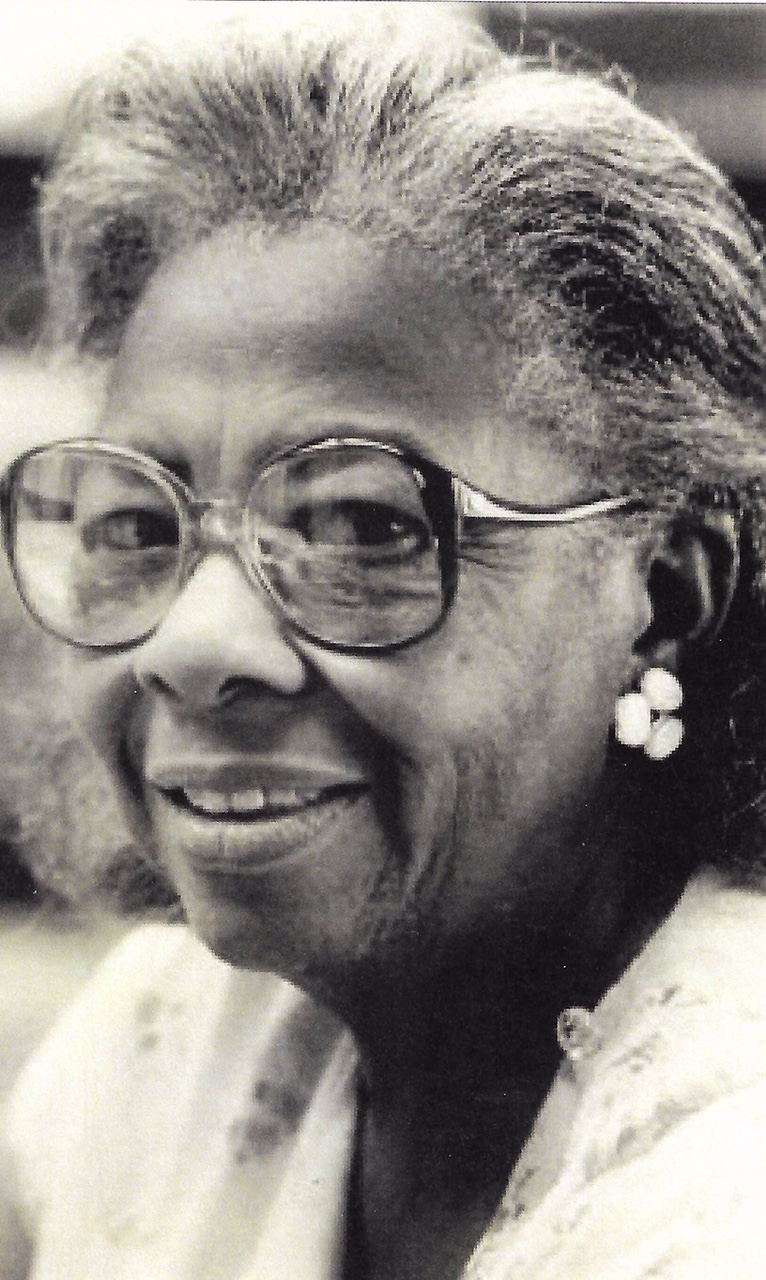Esther F. Garrison

Esther F. Garrison
Muscian - Administrator - School board member - Education Activist.
Esther F. Garrison was a Musician and singer who came to Savannah in 1942. She served as the church musician at Mt. Zion Baptist Church and worked as office manager at the International Longshoremen’s Association (ILA) 1414. Eight years later she was closely associated with the Savannah Branch NAACP and then president Westley Wallace Law. She was active in the Civil Rights movement and served as Branch Secretary for 28 years. In 1964, Garrison was appointed by Mayor Malcolm McLean as the first black Savannah school board member before the Savannah-Chatham boards were merged. She served 20 years as an elected member of the consolidated board and was elected pro tem and vice president by her peers. Today the Esther F. Garrison School for the Arts bears her name. Garrison was appointed as the first black woman to the board of education.
As a Musician Mrs. Garrison adapted the old Negro spirituals into the Freedom Songs for the NAACP’s Mass meetings held every Sunday in the early 1960s.
Law devoted himself to the fight for equality in Savannah for more than half a century. Read his powerful introduction to a collection of Freedom Songs to learn more about the founder of this museum and his passion for social justice.
Excerpt from: We Shall Not Be Moved Collection of “Freedom Now” Songs sung in the Mass Meetings of the Savannah, Georgia Branch and Youth Council of the National Association of the Advancement of Colored People
The Savannah NAACP movement started on Sunday, March 20, 1960, with the song “We Shall Not Be Moved” and then later the Reverends Patterson and Stell would often lead the singing of “We Are Climbing Jacob’s Ladder.”Still later, “We Shall Overcome” and “Freedom, Freedom” became the favorites of the Mass Meeting crowd, youth and adults. The wade - ins at Savannah Beach on Tybee Island inspired Mrs. Esther F. Garrison to write “Wade-In on Tybee”. Here is an excerpt:
BROWN SKINS WADE IN TYBEE
Tune: Wade in the Water Words and copyright by Mrs. Esther F. Garrison
Chorus:
Wade in Tybee,
Wade in Tybee, Chillun;
Wade in Tybee, Brown skins wade in Tybee.
I see a host - who can it be?
Brown skins wade in Tybee
They come from the N-A-A-C-P,
(Brown skins wade in Tybee)
Look at the children all dressed so fine,
(Brown skins wade in Tybee)
They’ve got swimming on their minds
(Brown skins wade in Tybee)
Mayfield’s giving a loud long wail,
(Brown skins wade in Tybee)
Can’t get nobody to stand their bail,
(Brown skins wade in Tybee)
Who’s that coming with the hard - set jaw?
(Brown skins wade in Tybee)
Looks like W. W. Law,
(Brown skins wade in Tybee)
On occasions, Hosea L. Williams, James R. Alexander and Mrs. Lucinda Jones would improvise additional verses during the singing. Frequently, Jesse Kearse, Jr., was called on to sing, “Precious Lord” and “I want Jesus to Walk with Me”, and Mrs. Mary L. Boyd to sing “How Great Thou Art” and Curtis Cooper, “ Oh Freedom”. In all of the singing, the distinctive voice of Mrs. Margaret Sneed could always be heard. When the singing began, it was always wonderful to have her in the audience because she sings Spirituals as they should be sung.
The humorous remarks of Rev. John S. Bryan, the Rev. James L. Hightower, and the Rev. F. D. Jaudon thrilled the mass meeting followers and was of great benefit to the freedom effort.
This book was published with my personal funds and at no cost to the Savannah Branch, NAACP. It is not for sale or general distribution but is presented to the NAACP Freedom Fighters for use during the regular Sunday meetings, if they so wish.
W. W. Law
Discussion Questions
- Why were the NAACP Mass Meetings important to the Civil Rights Movement in Savannah?
- What impact did the “Freedom Songs” have on the movement?
- Who was Esther F. Garrison and what was her role in the Civil Rights Movement?